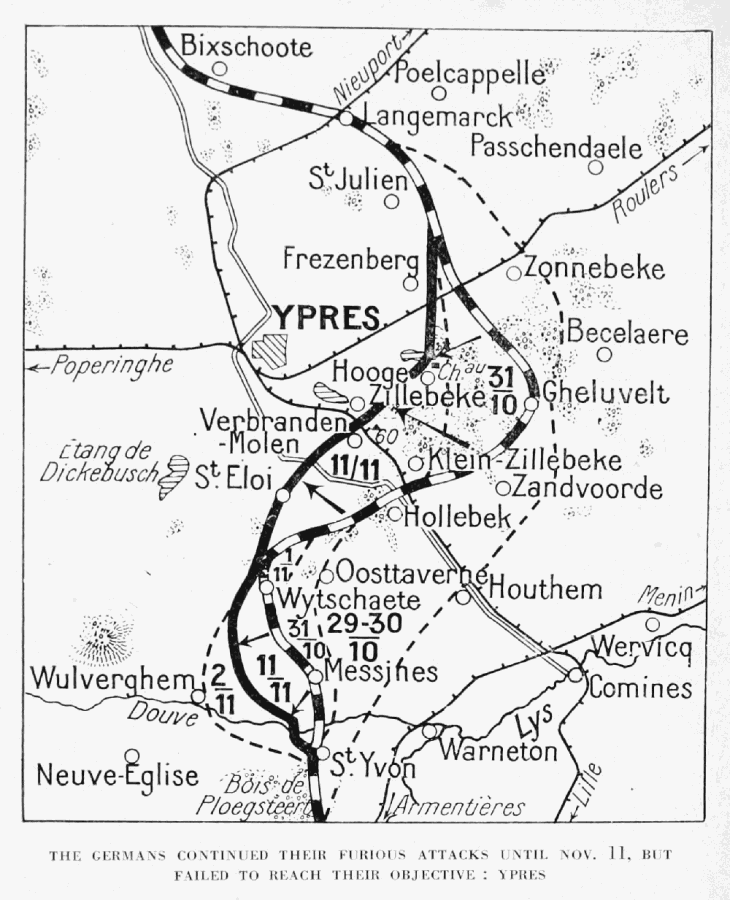3rd November 1914
The Dorsets spent the day being shelled in the woods, but at 4pm were gathered together and ordered to relieve the 2nd Battalion Royal Inniskilling Fusiliers, who had scratched out some very basic trenches in the recent fighting. The History of the Dorsetshire Regiment 1914-1919 lists them as the 1st Battalion Royal Irish Fusiliers. I’ve just looked at the 11th Brigade war diary and it uses the abbreviation of “innis fus” so it looks like the War Diary is correct. Whoever they were, the relief was completed by 6pm. The rest of the night was quiet.
The Dorsets found themselves at the junction between what became known as two separate battles; the Battle of Armentières was dying away to the south and the Battle of Messines was now raging away just to the north. Ploegsteert Wood was a natural barrier between the two battles but the Germans were still pushing very hard to take it.
The map today is a bit of a leap of faith and I would be most grateful for more information if anyone has any. Since the 15th Brigade has been practically broken up after leaving La Bassée, there’s a paucity of information available. Gleichen’s memoirs have been very useful so far. I’ve located the Dorsets along a north westerly line running from the Messines-Ploegsteert road (Mesen on the Google map) to the River Douve, with Frank halfway along that line entrenched somewhere in a field. The line at this point is clearly marked on the Michelin illustrated guide to the battlefields (1914-1918) Ypres and the Battles of Ypres as bending around the north of Ploegsteert Wood (on the map just left of St Yvon).

